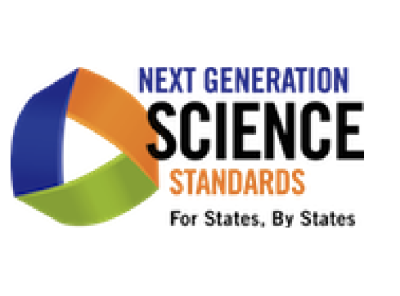An order in your Cart is not an order until you checkout. Thanks!
Showing 1–12 of 33 results
-
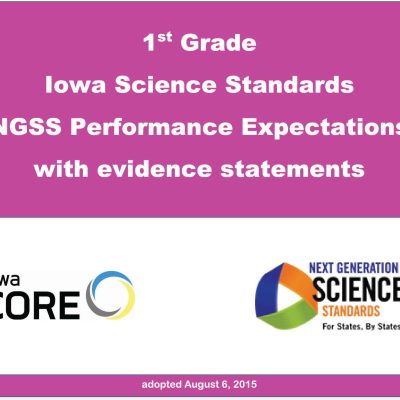
1st Grade Performance Evidence Booklet(1838S-CR)
The performance expectations in first grade help students formulate answers to questions such as: “What happens when materials vibrate? What happens when there is no light? What are some ways plants and animals meet their needs so that they can survive and grow? How are parents and their children similar and different? What objects are in the sky and how do they seem to move?” First grade performance expectations include PS4, LS1, LS3, and ESS1 Disciplinary Core Ideas from the NRC Framework. Students are expected to develop understanding of the relationship between sound and vibrating materials as well as between the availability of light and ability to see objects. The idea that light travels from place to place can be understood by students at this level through determining the effect of placing objects made with different materials in the path of a beam of light. Students are also expected to develop understanding of how plants and animals use their external parts to help them survive, grow, and meet their needs as well as how behaviors of parents and offspring help the offspring survive. The understanding is developed that young plants and animals are like, but not exactly the same as, their parents. Students are able to observe, describe, and predict some patterns of the movement of objects in the sky. The crosscutting concepts of patterns; cause and effect; structure and function; and influence of engineering, technology, and science on society and the natural world are called out as organizing concepts for these disciplinary core ideas. In the first grade performance expectations, students are expected to demonstrate grade-appropriate proficiency in planning and carrying out investigations, analyzing and interpreting data, constructing explanations and designing solutions, and obtaining, evaluating, and communicating information. Students are expected to use these practices to demonstrate understanding of the core ideas.
-
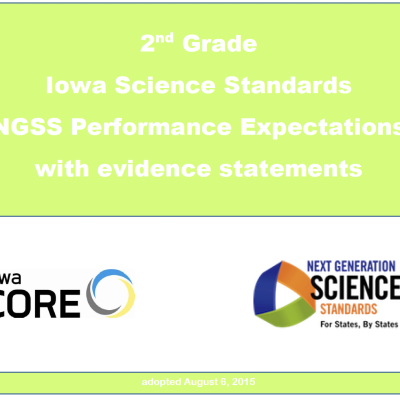
2nd Grade Performance Evidence Booklet(1839S-CR)
The performance expectations in second grade help students formulate answers to questions such as: “How does land change and what are some things that cause it to change? What are the different kinds of land and bodies of water? How are materials similar and different from one another, and how do the properties of the materials relate to their use? What do plants need to grow? How many types of living things live in a place?” Second grade performance expectations include PS1, LS2, LS4, ESS1, ESS2, and ETS1 Disciplinary Core Ideas from the NRC Framework. Students are expected to develop an understanding of what plants need to grow and how plants depend on animals for seed dispersal and pollination. Students are also expected to compare the diversity of life in different habitats. An understanding of observable properties of materials is developed by students at this level through analysis and classification of different materials. Students are able to apply their understanding of the idea that wind and water can change the shape of the land to compare design solutions to slow or prevent such change. Students are able to use information and models to identify and represent the shapes and kinds of land and bodies of water in an area and where water is found on Earth. The crosscutting concepts of patterns; cause and effect; energy and matter; structure and function; stability and change; and influence of engineering, technology, and science on society and the natural world are called out as organizing concepts for these disciplinary core ideas. In the second grade performance expectations, students are expected to demonstrate grade appropriate proficiency in developing and using models, planning and carrying out investigations, analyzing and interpreting data, constructing explanations and designing solutions, engaging in argument from evidence, and obtaining, evaluating, and communicating information. Students are expected to use these practices to demonstrate understanding of the core ideas.
-

3rd Grade Performance Evidence Booklet(1840S-CR)
The performance expectations in third grade help students formulate answers to questions such as: “What is typical weather in different parts of the world and during different times of the year? How can the impact of weather-related hazards be reduced? How do organisms vary in their traits? How are plants, animals, and environments of the past similar or different from current plants, animals, and environments? What happens to organisms when their environment changes? How do equal and unequal forces on an object affect the object? How can magnets be used?” Third grade performance expectations include PS2, LS1, LS2, LS3, LS4, ESS2, and ESS3 Disciplinary Core Ideas from the NRC Framework. Students are able to organize and use data to describe typical weather conditions expected during a particular season. By applying their understanding of weather-related hazards, students are able to make a claim about the merit of a design solution that reduces the impacts of such hazards. Students are expected to develop an understanding of the similarities and differences of organisms’ life cycles. An understanding that organisms have different inherited traits, and that the environment can also affect the traits that an organism develops, is acquired by students at this level. In addition, students are able to construct an explanation using evidence for how the variations in characteristics among individuals of the same species may provide advantages in surviving, finding mates, and reproducing. Students are expected to develop an understanding of types of organisms that lived long ago and also about the nature of their environments. Third graders are expected to develop an understanding of the idea that when the environment changes some organisms survive and reproduce, some move to new locations, some move into the transformed environment, and some die. Students are able to determine the effects of balanced and unbalanced forces on the motion of an object and the cause and effect relationships of electric or magnetic interactions between two objects not in contact with each other. They are then able to apply their understanding of magnetic interactions to define a simple design problem that can be solved with magnets. The crosscutting concepts of patterns; cause and effect; scale, proportion, and quantity; systems and system models; interdependence of science, engineering, and technology; and influence of engineering, technology, and science on society and the natural world are called out as organizing concepts for these disciplinary core ideas. In the third grade performance expectations, students are expected to demonstrate grade-appropriate proficiency in asking questions and defining problems; developing and using models, planning and carrying out investigations, analyzing and interpreting data, constructing explanations and designing solutions, engaging in argument from evidence, and obtaining, evaluating, and communicating information. Students are expected to use these practices to demonstrate understanding of the core ideas.
-

4th Grade Performance Evidence Booklet(1841S-CR)
The performance expectations in fourth grade help students formulate answers to questions such as: “What are waves and what are some things they can do? How can water, ice, wind and vegetation change the land? What patterns of Earth’s features can be determined with the use of maps? How do internal and external structures support the survival, growth, behavior, and reproduction of plants and animals? What is energy and how is it related to motion? How is energy transferred? How can energy be used to solve a problem?” Fourth grade performance expectations include PS3, PS4, LS1, ESS1, ESS2, ESS3, and ETS1 Disciplinary Core Ideas from the NRC Framework. Students are able to use a model of waves to describe patterns of waves in terms of amplitude and wavelength, and that waves can cause objects to move. Students are expected to develop understanding of the effects of weathering or the rate of erosion by water, ice, wind, or vegetation. They apply their knowledge of natural Earth processes to generate and compare multiple solutions to reduce the impacts of such processes on humans. In order to describe patterns of Earth’s features, students analyze and interpret data from maps. Fourth graders are expected to develop an understanding that plants and animals have internal and external structures that function to support survival, growth, behavior, and reproduction. By developing a model, they describe that an object can be seen when light reflected from its surface enters the eye. Students are able to use evidence to construct an explanation of the relationship between the speed of an object and the energy of that object. Students are expected to develop an understanding that energy can be transferred from place to place by sound, light, heat, and electric currents or from object to object through collisions. They apply their understanding of energy to design, test, and refine a device that converts energy from one form to another. The crosscutting concepts of patterns; cause and effect; energy and matter; systems and system models; interdependence of science, engineering, and technology; and influence of engineering, technology, and science on society and the natural world are called out as organizing concepts for these disciplinary core ideas. In the fourth grade performance expectations, students are expected to demonstrate grade-appropriate proficiency in asking
questions, developing and using models, planning and carrying out investigations, analyzing and interpreting data, constructing explanations and designing solutions, engaging in argument from evidence, and obtaining, evaluating, and communicating information. Students are expected to use these practices to demonstrate understanding of the core ideas. -
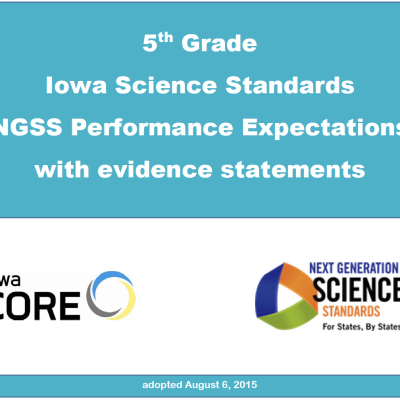
5th Grade Performance Evidence Booklet(1842S-CR)
The performance expectations in fifth grade help students formulate answers to questions such as: “When matter changes, does its weight change? How much water can be found in different places on Earth? Can new substances be created by combining other substances? How does matter cycle through ecosystems? Where does the energy in food come from and what is it used for? How do lengths and directions of shadows or relative lengths of day and night change from day to day, and how does the appearance of some stars change in different seasons?” Fifth grade performance expectations include PS1, PS2, PS3, LS1, LS2, ESS1, ESS2, and ESS3 Disciplinary Core Ideas from the NRC Framework. Students are able to describe that matter is made of particles too small to be seen through the development of a model. Students develop an understanding of the idea that regardless of the type of change that matter undergoes, the total weight of matter is conserved. Students determine whether the mixing of two or more substances results in new substances. Through the development of a model using an example, students are able to describe ways the geosphere, biosphere, hydrosphere, and/or atmosphere interact. They describe and graph data to provide evidence about the distribution of water on Earth. Students develop an understanding of the idea that plants get the materials they need for growth chiefly from air and water. Using models, students can describe the movement of matter among plants, animals, decomposers, and the environment and that energy in animals’ food was once energy from the sun. Students are expected to develop an understanding of patterns of daily changes in length and direction of shadows, day and night, and the seasonal appearance of some stars in the night sky. The crosscutting concepts of patterns; cause and effect; scale, proportion, and quantity; energy and matter; and systems and systems models are called out as organizing concepts for these disciplinary core ideas. In the fifth grade performance expectations, students are expected to demonstrate grade-appropriate proficiency in developing and using models, planning and carrying out investigations, analyzing and interpreting data, using mathematics and computational thinking, engaging in argument from evidence, and obtaining, evaluating, and communicating information; and to use these practices to demonstrate understanding of the core ideas.
-

6th Grade Performance Evidence Booklet(1843S-CR)
This booklet includes the performance expectations for the grade band indicated as well as evidence statements for each performance expectation.
-
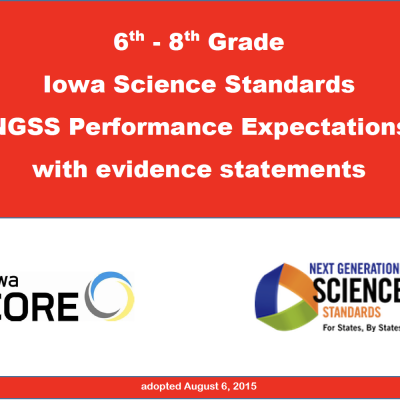
6th–8th Grade Performance Evidence Booklet(1846S-CR)
This booklet includes the performance expectations for the grade band indicated as well as evidence statements for each performance expectation.
-

7th Grade Performance Evidence Booklet(1844S-CR)
This booklet includes the performance expectations for the grade band indicated as well as evidence statements for each performance expectation.
-
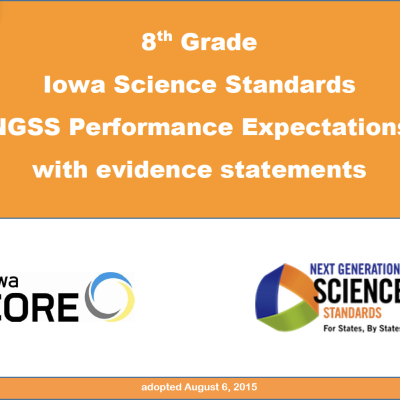
8th Grade Performance Evidence Booklet(1845S-CR)
This booklet includes the performance expectations for the grade band indicated as well as evidence statements for each performance expectation.
-

9th–12th Grade Performance Evidence Booklet(1847S-CR)
This booklet includes the performance expectations for the grade band indicated as well as evidence statements for each performance expectation.
-
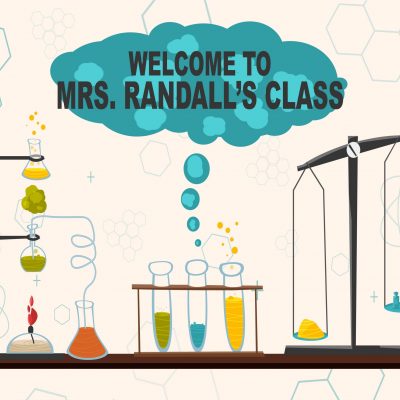
Chemistry Lab Personalized (2814S-NW)
Science, full color, 28×22, laminated. Please indicate teacher’s name in Special Instructions.

